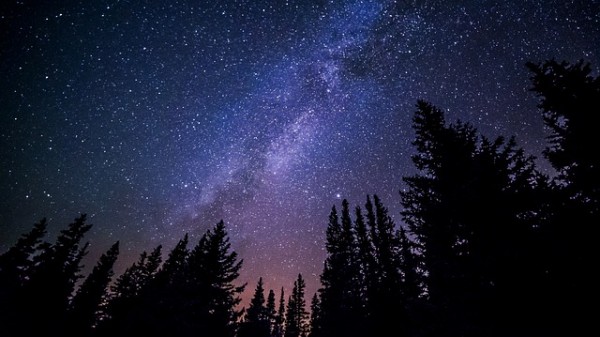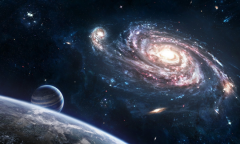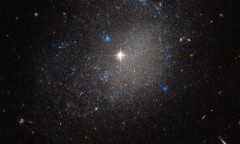By Vishal Goel, | January 06, 2017

FRBs do not belong to the Milky Way Galaxy. (Unsplash)
Astronomers have discovered the source of the mysterious radio waves called fast radio bursts (FRBs) coming from the deep space outside Milky Way. These high-energy flashy radio waves are apparently coming from a dwarf galaxy located three billion light years away from Earth.
FRBs, discovered a decade ago, flash only for a micro-instant and emit as much energy in a millisecond as the sun does in around 10,000 years.
Like Us on Facebook
The discovery does not tell what exactly causes these high-energy surges of long waves at the far end of the electromagnetic spectrum, but it definitively eliminates several theories that had been in the running.
According to the Guardian, there have been a total of eighteen fast radio bursts registered since 2007, but only one - observed in 2012 at the Arecibo Observatory in Puerto Rico - recurred numerous times. This unique case of the FRB, dubbed FRB 121102, prompted a team of scientists led by Shami Chatterjee of Cornell University to prepare themselves for the next occurrence. In eighty-three hours of observation over six months, the Karl G Jansky multi-antenna array of radio telescopes detected nine distinct pulses.
According to Heino Falcke, an astronomer at Radboud University Nijmegen in the Netherlands, even though the reason of the FRBs is not known, it is still a "real game-changer."
Until now, many experts had speculated that FRBs could be produced by cataclysmic events such as stars exploding into supernovae, or neutron stars collapsing into black holes. After the discovery, it could be said that while these one-off scenarios are possible to produce such bursts, all of them are inconsistent with multiple pulses such as those generated by FRB 121102.
According to Shriharsh Tendulkar, a scientist at McGill University in Montreal, and co-author Casey Law, an astronomer at the University of California at Berkeley, the FRBs do not belong to the Milky Way Galaxy, a theory proposed many at times by scientists.
What could be the reason for FRBs?
According to astronomers, one of the top candidates is a neutron star (possibly a type known as a magnetar) surrounded by material ejected by a supernova explosion. A neutron star is small but extremely dense and is formed by the gravitational collapse of a star not quite massive enough to produce a black hole when it explodes. A magnetar is a type of neutron star with an extremely powerful magnetic field.
-
Use of Coronavirus Pandemic Drones Raises Privacy Concerns: Drones Spread Fear, Local Officials Say

-
Coronavirus Hampers The Delivery Of Lockheed Martin F-35 Stealth Fighters For 2020

-
Instagram Speeds Up Plans to Add Account Memorialization Feature Due to COVID-19 Deaths

-
NASA: Perseverance Plans to Bring 'Mars Rock' to Earth in 2031

-
600 Dead And 3,000 In The Hospital as Iranians Believed Drinking High-Concentrations of Alcohol Can Cure The Coronavirus

-
600 Dead And 3,000 In The Hospital as Iranians Believed Drinking High-Concentrations of Alcohol Can Cure The Coronavirus

-
COVID-19: Doctors, Nurses Use Virtual Reality to Learn New Skills in Treating Coronavirus Patients











